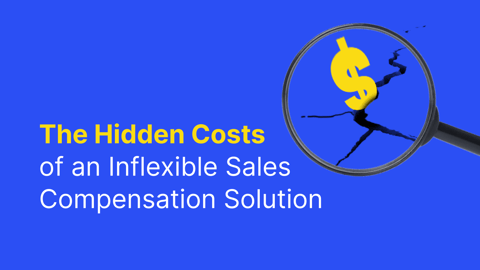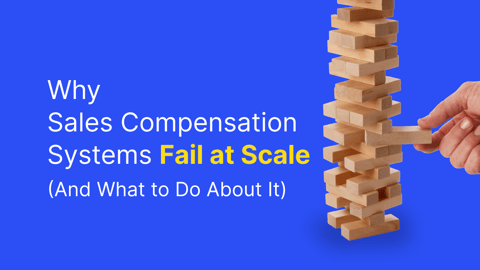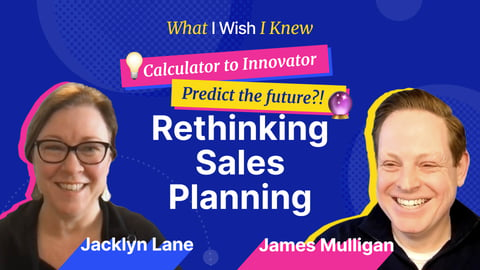Impossibly high quotas, territories that are either under or over-resourced, and outdated processes and systems that make tracking figures and commission cumbersome. If all or any of these three topics feature on your “Typical topics of concern in my workplace”, then this blog is designed with you in mind. But we’re not just here to rake over the same old anxieties regarding those endlessly and seemingly unsolvable challenges. Read on and discover how the right SPM software challenge can help to get you and your sales division on a profitable and efficient path to success while waving a permanent goodbye to a host of issues that historically impeded your progress.
At Varicent, we appreciate it takes more than a magic marker to make a sluggish system and demotivated workforce perform better. We like to research, road-test, and revise our SPM software solutions, with help from real sales companies. That’s why we’re including a few findings from a recent study we conducted across businesses before and after system implementation, called The Forrester Study, The Total Economic Impact™ of Varicent’s Sales Performance (TEI). So how exactly can the right SPM software platform clear issue to sales success and increased revenue?
Three Problems and Answers When Considering Your SPM Software Situation
Challenge 1: We Must Overcome Team Fragmentation and Lack of Trust
If your team is all over the place (both physically and mentally), you need to feel that the platform sustaining them is solid. In the case of the business captured in the Forrester Study, with many legacy systems (which cost a lot to maintain) ¹, there was an unhealthy reliance on siloed legacy systems and spreadsheets to capture sales, which often were used (poorly) in conjunction with a host of other systems. The result is not just inaccurate data capture, but when it comes to the subject of incentive compensation, teams and individuals lack trust in the reporting output and what it says on their pay slips. And there is a strong chance that not only are your sales team doubting the paperwork and resorting to shadow accounting; they could be wondering if everyone is on the same compensation system which could potentially erode trust in each other.
By implementing a universal, integrated system all sales reports are calculated automatically, accurately, and in real-time. Full accessibility means that if there is a payment query, it can be submitted immediately via an Incentive Compensation Software (ICM) solution, while the customizable dashboards and value-rich reporting create a much higher level of visibility and transparency across the organization.
Challenge 2: Someone Always Takes Issue with Territory and Quota Allocations
You could argue that territory issues (forgive the pun) come with the territory. Getting the allocation of a geographical sales area on the money is a science in itself, as is knowing how to distribute and share quotas. One person may feel that they are fighting a losing battle in a region flooded with competitors, while another team may feel that there are too many of them in one place to make a decent crack at earning a commission.
By harnessing the analytics and reporting power of a great SPM software platform designed specifically for territories and quota management, your life, and that of your team can be much more straightforward. The software is more than capable of demystifying the most complex territorial dilemma and is built to understand that any allocation is so much more than a geographical consideration. From early project planning to campaign execution and through to post-sales review, this platform helps to ensure everyone is operating on a level playing field.
Challenge 3: Our Inconsistent Numbers Mean Auditors are Constantly on Our Case
Getting audited as an experience is probably on par with a visit to the dentist for root canal treatment. Nobody wants it, it always hurts (and costs) more than you anticipate, and it just messes up your routine – but yes, it’s a “necessary evil”. As an example of what that cost and interference look like before getting on board with the Varicent SPM software solution, for the participants in our study, an average of 120 hours was devoted to information gathering from numerous sources before the auditors came to visit – which happened four times a year, so that’s a lot of hours. And even after all that preparation, it was costing around $36 an hour for every auditor², so that’s a lot of cash outlay as well.
After Varicent’s SPM software was introduced, anticipating, and receiving the arrival and presence of the auditors got a whole lot less painful and expensive. By being able to hand over full and accurate sales reports and data to the auditors saved the business 80 percent in time in the first year³. As for the functionality that makes the auditing process that much less of a burden, we have the audit tracking feature to thank for that. By removing the previous maze of paper trails that went off in more directions than Medusa’s head of snakes, the business in question could start to feel more comfortable that their “house” was in order, even before auditors confirmed this by approving the books.
Your Next Step
We know that no two sales teams, divisions, or businesses are the same. That’s why our partnerships and research with a variety of companies and participants continue to inform our product development. By investing in a platform like ours, that addresses the complexities of the sales world while simplifying the processes that keep it going, you can be confident that there is an integrated software solution, whatever the issue is.
Discover more about the solutions provided to the businesses in our research by downloading the full Forrester Study today.
¹,²,³Page 20: The Total Economic Impact of Varicent™ Sales Performance Management



